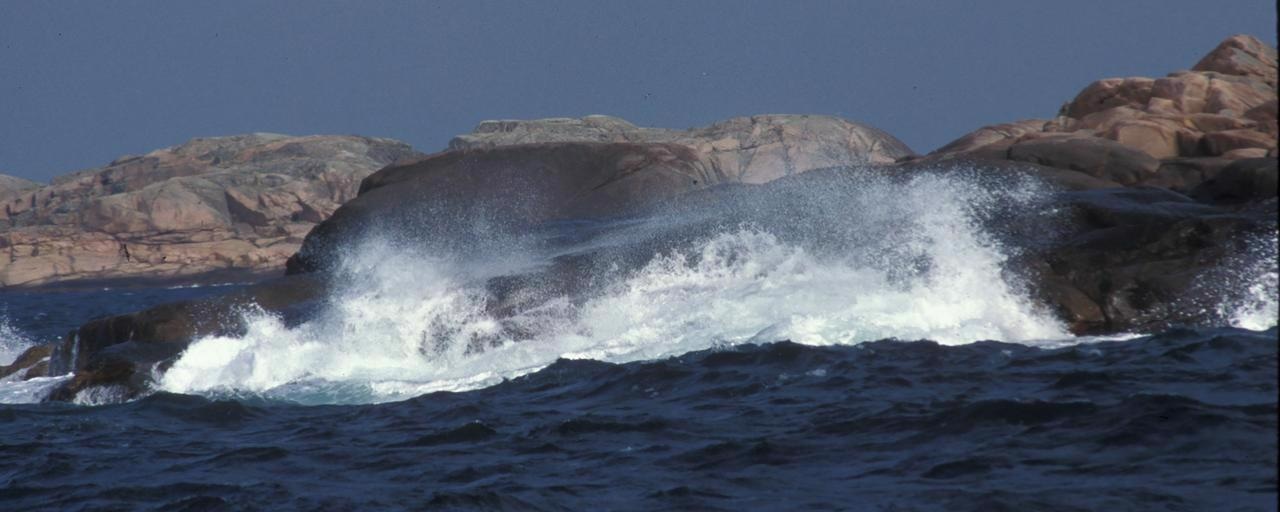Reviewed by Alex SmithMay 31 2022
When people experience heavy storms, the stratified layers of water in ocean fjords get mixed. This results in oxygenation of the fjord floor. However, such storm events also give rise to a spike in methane emissions from fjords to the air.
 In many fjords, anoxic environments at the bottom result in the production of methane gas. In heavy storms, the water from the bottom is brought up to the surface, resulting in large emissions of methane gas into the atmosphere. Image Credit: R. Lindblom.
In many fjords, anoxic environments at the bottom result in the production of methane gas. In heavy storms, the water from the bottom is brought up to the surface, resulting in large emissions of methane gas into the atmosphere. Image Credit: R. Lindblom.
At the University of Gothenburg, scientists have evaluated that the complete emissions of this climate-warming gas are as great from fjords as from all the deep ocean areas put collectively in a global manner.
The fjords of the world were made when the inland ice decreased, and are a comparatively unique natural feature. This adds up to only 0.13% of all the oceans on Earth. But as per the scientists from the University of Gothenburg, emissions of methane from the surface of fjords are equivalent to the emissions of this gas from global deep oceans which constitute 84% of the global sea surface area.
The outcomes were presented in the renowned science journal Limnology and Oceanography Letters.
It’s been known for some time that many fjords have anoxic environments closest to the bottom and that methane forms in the bottom sediment. Usually, only a small portion of this gas ever reaches the atmosphere because it gets broken down as it ascends through the more oxygen-rich waters closer to the surface. But in our research, we recorded large emissions of methane when the water in the fjord was mixed during storm events, for example.
Stefano Bonaglia, Researcher, Marine Geochemistry, Department of Marine Sciences, University of Gothenburg
Anoxic Environments Produce Methane
To model the future climate, detecting and budgeting methane emissions to the air is necessary. Scientists evaluate that methane emissions tend to cause around 30% of the greenhouse effect.
The participation of the oceans in methane emissions has been budgeted as considerably smaller compared to land areas. However, human activity has raised eutrophication in coastal regions, and this has made bigger areas of anoxic waters on the seafloor.
This is particularly evident in fjords, and even though they add up to just 0.13% of the global sea surface area, they account for nearly half of all methane emissions to the air.
This is because in fjords, carbon-rich sediment is deposited from marine plants and animals as well as from materials entering the fjords from the surrounding land via streams that flow into them.
Stefano Bonaglia, Researcher, Marine Geochemistry, Department of Marine Sciences, University of Gothenburg
Bonaglia added, “As fjords are relatively protected from ocean currents, the water tends to remain stratified in layers at different temperatures and with different concentrations of salt and oxygen. The layers closest to the fjord floor are anoxic regions where methane gas forms as the material in the sediment decomposes.”
Agriculture Drives Eutrophication
The scientists from the University of Gothenburg studied By Fjord near Uddevalla from 2009 to 2021 and executed field studies to quantify methane production in the fjord. By Fjord is hypoxic and has been impacted by eutrophication.
The Bäve River flows into the fjord, thereby bringing with it huge concentrations of nutrients from agriculture in the region. It was evident that at the time of the mixing events in the fjord, emissions of methane to the air increased.
At the time of such events, anoxic water from the bottom is lifted to the surface, taking the methane along with it, which can further be discharged into the air.
One Million Tons Methane
The methane emissions were high, and American researchers have seen the same types of events in fjords in Canada. We estimate that emissions from all the world’s fjords are of the same magnitude—around 1 Teragram (Tg) or 1 million tonnes per year—as the budgeted emissions from global deep oceans.
Stefano Bonaglia, Researcher, Marine Geochemistry, Department of Marine Sciences, University of Gothenburg
Bonaglia continued, “This is because the distance from the bottom to the surface of a fjord is much shorter than in deep oceans. This results in more organic matter being deposited in the sediment, and not enough time for the methane to be broken down on its way up to the surface.”
Stefano Bonaglia added that if climate change results in highly extreme weather events, there could be an increase in methane emissions, but that can only happen up to a certain point.
“If we were to see a sharp rise in the number of heavy storm events, methane emissions would be reduced, because the anoxic environments at the bottom of fjords would disappear if the water are mixed frequently,” added Bonaglia
Journal Reference:
Bonaglia, S., et al. (2022) High methane emissions from an anoxic fjord driven by mixing and oxygenation. Limnology and Oceanography Letters. doi.org/10.1002/lol2.10259.